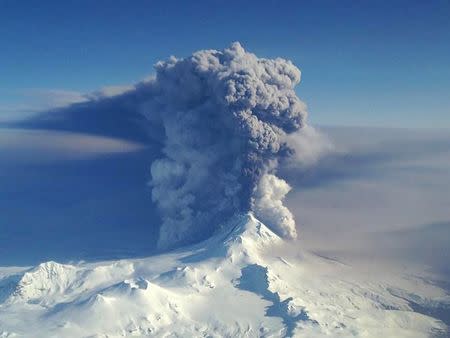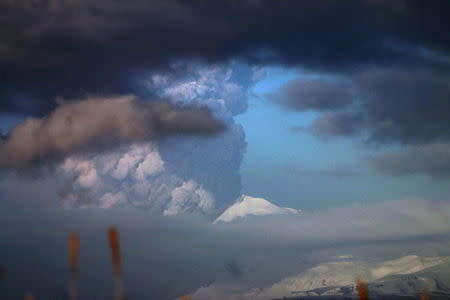Alaska volcano goes quiet but remains 'restless,' scientists say
By Dan Whitcomb (Reuters) - An Alaskan volcano that began erupting 10 days ago, belching an ash cloud 20,000 feet (6,906 meters) high that triggered aviation warnings, ended its latest round of seismic activity on Wednesday but may not stay quiet for long, scientists said. Satellite observations showed no evidence of further "eruptive activity" on Mount Pavlof and low levels of seismic activity suggested that the volcano had subsided, the Alaska Volcano Observatory said in a statement. But the mountain could stir again with little or no warning, the agency said, adding in a post on Twitter: "The volcano remains restless and a return to robust eruptive activity is possible." Pavlof, one of the most active volcanoes on the Alaska Peninsula, began erupting on March 27, unleashing a towering plume of ash over its icy slopes drifting to the northwest. The Federal Aviation Administration issued a "red" aviation alert in response to the ash cloud, which required that local and regional flights, including cargo air traffic out of Anchorage, be re-routed. The alert level was dropped to yellow on Wednesday. Scientists say the eruption did not pose an immediate danger to nearby communities on the peninsula, which were monitoring the ash fall. The closest residential area is Cold Bay, located 37 miles (60 km) southwest of Pavlof. There have been more than 40 eruptions from Pavlof, including between May and November of 2014, when ash plumes also triggered aviation warnings. Such events can last weeks or months. (Reporting by Dan Whitcomb; Editing by Leslie Adler)


